What is a 1099 form and how to prepare and file it?
- 2 Sep 2021
- 5 mins read
- Posted in
If you’re new to working with freelancers, vendors, or contractors, you might have heard of 1099 forms, but what exactly are they? Here’s everything you need to know about these forms, from the deadlines and penalties, through to how to prepare and file them.
Please note: The information in this blog is only relevant for those based in the United States.
Contents:
- What is a 1099 form?
- How can a solution like TalentDesk.io help prepare 1099 forms?
- What are the fines and penalties?
- What are the deadlines?
- Who needs to complete 1099 forms?
- How to prepare & file a 1099 form with the IRS?
- Handy resources
What is a 1099 form?
(Back to contents 🔝)
There are a variety of different types of 1099 forms which are used in order to report to the Internal Revenue Service (IRS), the various types of income received throughout the year, other than the salary paid to a person by their employer. The most common form, which we will be breaking down in this blog, is the 1099-MISC form. This is the type of form that companies and business owners should be concerned with in relation to working with independent contractors and freelancers. The person or entity that is the making the payment, is responsible for filling out the relevant 1099 tax form.
Who receives a 1099 form?
The IRS receives 1099 forms from companies that have paid independent contractors, or other self-employed workers $600+ in fees, real estate rent, compensation, awards, prizes, or any other kind of taxable income during the year. The IRS then uses the information to verify freelancers income, so they can then determine their federal income tax levels.
For the reason above, it is not the freelancers job to file 1099 forms, but they need to be receiving them. Freelancers receive 1099-MISC forms from their clients so they can record how much money the client has paid them throughout the year. This is then used by the IRS to track how much money they have received and if it’s been reported on their tax return.
What is a 1099 form used for?
1099 forms are used to keep track of how much income was received throughout the year and what kind of income it was. From a company’s point of view, a 1099 form is used to report how much they have paid to a non-employee during the year, for example, a freelancer or a contractor. It is the company’s responsibility to get 1099-MISC forms completed and sent to the IRS and any relevant external employees by the deadline.
The information included in the 1099 form is then used by independent contractors and freelancers to report their earnings when they do their tax returns.
How can a solution like TalentDesk.io help you complete 1099 forms quickly and correctly?
(Back to contents 🔝)
Instead of manually processing a 1099 form for each freelancer or contractor, which can be very time-consuming, a solution like TalentDesk.io can save companies a lot of effort and countless hours on admin time. Our platform simplifies filling out 1099 forms, with easily accessible and transparent records, making finding the right information very easy. All freelancer and contractor payments are clearly organised, as is their personal information and onboarding documents, which are collected from the get-go, safely stored on the cloud and are simple to view through freelancer's profiles. In fact, for companies based in the US, hiring contractors in the US, our platform automates the collection of this information and collects all relevant information for 1099 tax filing on your behalf. We can also file your 1099s for you, at a very low cost, or alternatively you can download all the information from the platform and file directly to the IRS. All this without the stress of having to chase contractors for the relevant information close to deadline (we've all been there).
In a nutshell, all the information required to complete a 1099 form is easily accessible on one intuitive platform. Having TalentDesk.io in place also means that employees, and non-employees are clearly classified, so companies can quickly and efficiently identify whether individuals need a W-2 or whether a 1099 form needs to be filled out for them.
If your company has any challenges or issues with the points below, then a solution like TalentDesk.io can make your life much easier, more effortless and save a lot of valuable time and resources (and help avoid any hefty fines!)
- Locating important documents
- Keeping track of freelancers and contractors personal details
- Payment details and records
- Worker classification - 1099 contractors vs w-2 employees
- Filling out 1099 forms quickly and efficiently
What are the fines and penalties?
(Back to contents 🔝)
If you forget to file forms, have filled them out incorrectly, or missed the deadline (January 31st for the previous year’s information), you will be subject to a penalty from the IRS. The amount will be partly based on when the forms were filed:
- If you filed late, but within 30 days of the due date, then the penalty will be $50 per 1099, up to a max of $556,500.
- If you filed more than 30 days late, but on or before 1st August, the penalty increases to $100 per 1099 up to a max of $1,609,000.
- If you file after 1st August, the penalty increases to $260 per 1099, up to a max of $3,218,500.
However, there are some exceptions:
- If you can prove that there is reasonable cause, rather than negligence, for the failure to get the correctly filled out forms in by the deadline.
- If you can show that the mistake(s) or error(s) are inconsequential, and in some circumstances, you can demonstrate ‘good faith’ in working towards getting the corrected forms to the IRS.
On the other hand, If the IRS concludes that you are showing deliberate disregard for filing the necessary forms, the penalty can rise to a minimum of $530 per 1099, with no maximum amount. The best practice action to take if you realize that you will be late getting your forms in, or that you have filled out your forms incorrectly is to get in touch with the IRS immediately to explain and update them, and then correctly file the necessary forms.
You can also request an extension using the IRS Form 8809 (however, please note that this does not extend the January 31 deadline for submitting a copy of the 1099 to your freelancers).
What are the deadlines?
(Back to contents 🔝)
There are two parts of a 1099 MISC filing, Copy A and Copy B. Copy A, is sent to the IRS once a company has hired and paid an independent contractor. Copy B is the copy that companies must send to the independent contractor.
For both copies, the deadline to get your 1099 information to the IRS and the independent contractor, is January 31st.
Who needs to complete 1099 forms?
(Back to contents 🔝)
If your business hired and paid a freelancer or contractor more that $600 during the course of the year, then you are responsible for filing a 1099-MISC form. Payment can refer to not just the simple transfer of money, but also rent, compensation, awards and more. For the full list of payments visit the IRS website.
If you’ve paid a freelancer less that $600 throughout the year, then you do not need to file a form.
How to prepare & file a 1099 form with the IRS?
(Back to contents 🔝)
Step 1: Gather and safely store all the right information
To complete and file a 1099 form you’ll need to have the following information on each independent contractor:
- The total amount paid to them during the tax year
- Their legal name
- Their address
- The taxpayer ID numbers (e.g. their social security number etc.)
As best practice, the simplest way to acquire all this information is when you onboard your freelancers, to have them fill out a W-9 form. This is where a system like TalentDesk.io comes in, so that you can easily store and access the right information fast.
Once you’ve collated all the necessary information, it’s time to fill out the 1099-MISC form.
Step 2: Send the form(s) to the IRS
Copy A of the form needs to be sent to the IRS by January 31, regardless of whether you choose to file electronically or by mail.
Step 3: Send the form(s) to all your independent contractors
Ensure that copy B is sent to all freelancers by January 31.
FYI👇
If you file physical copies of 1099 forms to the IRS you need to also complete and file form 1096. The deadline for this is also January 31st.
Depending on which state you’re based in, you may have to also file 1099 forms with your state too.
We are currently working on some new features to make 1099 filling even more effortless for you through the TalentDesk.io platform. Watch this space; we will be updating you soon!
Handy resources:

Melita Merceron
Tags
Speak to us to find out how we can help you pay your contractors more efficiently
Related articles
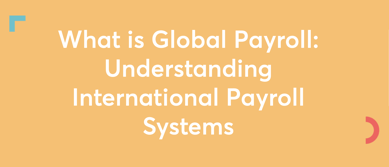
What is Global Payroll: Understanding International Payroll Systems
Explore the essentials of global payroll, how it supports multinational operations, ensures compliance, and simplifies payroll processing across borders.
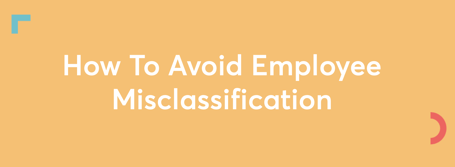
How To Avoid Employee Misclassification
Avoid costly errors by learning about employee misclassification risks, legal ramifications and compliance strategies when classifying your workers.

Work, Reconstructed
Xenios Thrasyvoulou and Glen Hodgson discusses the main compliance issues that are faced today within the talent and HR sectors.
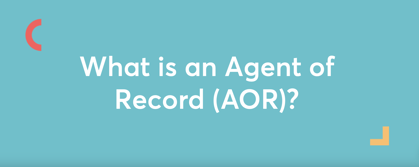
What is an Agent of Record (AOR)?
Read about the essential role of an Agent of Record (AOR) in representing freelancers and contractors globally, ensuring compliance and smooth operations.
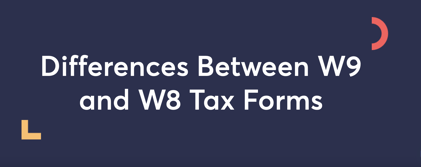
Differences Between W9 and W8 Tax Forms
Unravel the purposes of W-8 and W-9 tax forms, download them, understand when and how to use them, and navigate the complexities of US tax compliance effectively.
How to pay 1099 employees
How to pay 1099 employees
Navigate 1099 employee payments with ease. Learn how to ensure timely, compliant compensation for your contractor workforce.
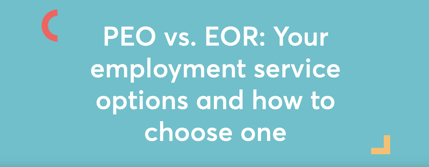
PEO vs. EOR
Though similar, PEOs and EORs have key differences. Learn the distinctions and find out which is right for your business.

Freelancing and The Future of Work
Xenios Thrasyvoulou discusses shaking up the employment game, refreshing the tax rulebook, and removing the final hurdles to a super-flexible workforce.

What is a 1099 employee?
Failure to classify your workers correctly can impact finances, employee morale and your business’ reputation. Learn all you need about 1099 employees here
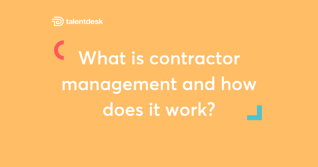
How to Determine a Contractor vs Employee
Use our comparison chart and checklist to test whether your workers are Contractor vs Employee. Classifying workers correctly is a legal requirement.
